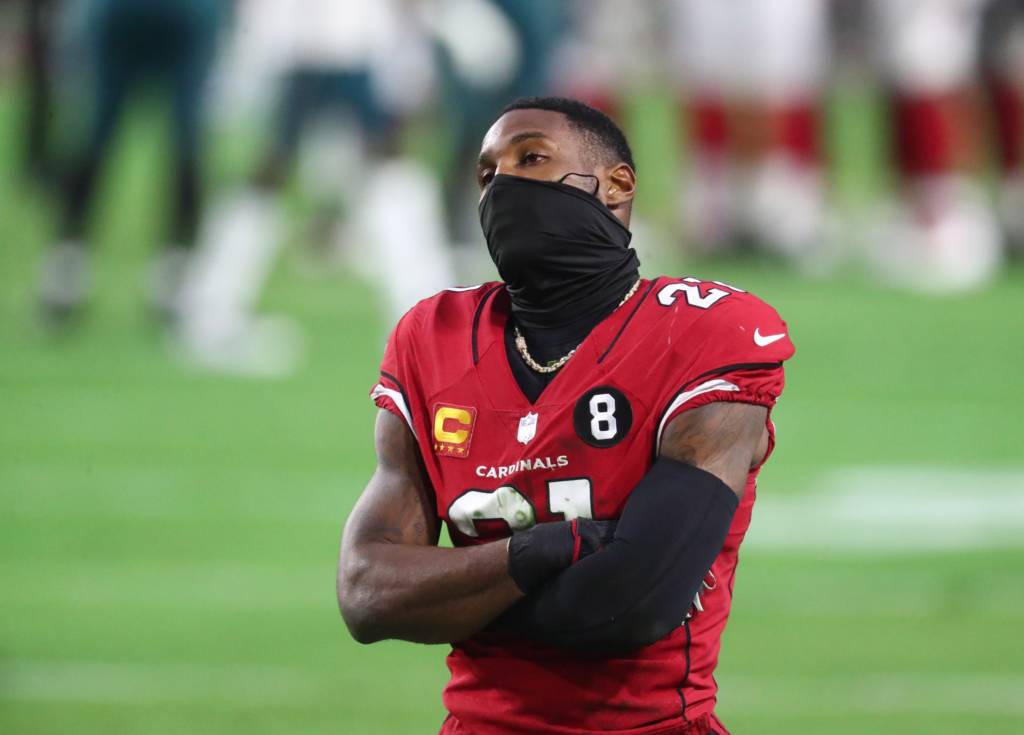There was plenty of excitement when the Minnesota Vikings signed Patrick Peterson. By adding a three-time All-Pro and eight-time Pro Bowler to a defense that ranked 27th in yards allowed and 29th in points allowed, the Vikings had made a big splash this offseason.
“Vikings Sign Patrick Peterson” is the kind of flashy headline we should have expected. Rick Spielman mentioned that he felt the need to “reconnect with the fan base” during a press conference earlier this month. With Peterson, the Vikings made a move that created buzz coming off a 7-9 season.
But it also exposes a flaw in their strategy. Even after adding Peterson, the Vikings still have multiple holes on their roster. While they could fill many of them with their 11 draft picks, there’s no guarantee those players will contribute immediately. With the Vikings in need of players who can make an immediate impact, is this the best way to approach free agency?
The Vikings started free agency by adding Dalvin Tomlinson on a two-year, $22 million deal. He didn’t come cheap, but it made sense given what Mike Zimmer prioritizes. The Vikings created a duo that can stop the run by adding a 320 lb run stuffer next to the 345 lb Michael Pierce.
That sounds great until you factor in what it took to bring Pierce to Minnesota. The Vikings released Kyle Rudolph, Riley Reiff, and Dan Bailey just to get under the salary cap and then worked a restructured deal with Anthony Barr just to get into the black. Then they shuffled Adam Thielen’s contract to make more cap room to sign a player who has the same skill set as Pierce.
It’s reminiscent of how the Vikings handled last offseason to get under the cap. After extending Kirk Cousins and trading Stefon Diggs to Buffalo, the Vikings signed Pierce as their free-agency prize. Although the Vikings couldn’t have known that Pierce would opt out of the 2020 season, they could have seen other areas of the roster that needed attention.
Instead of using several minor signings to patch the offensive line, defensive line, and secondary, the Vikings threw all of their cash at one player, forcing them to draft a 16-player class. Only four of those players — Justin Jefferson, Jeff Gladney, Ezra Cleveland, and Cameron Dantzler — seized meaningful roles in their rookie year, and Minnesota’s deficiencies were brought to light this season.
The Vikings appeared to be willing to fix those same areas after signing Tomlinson. With Thielen’s restructure, the Vikings still had money to sign a cornerback, a starting safety, and an offensive lineman. Instead, the Vikings threw $10 million at Peterson to add a big name to their secondary.
Peterson’s signing might turn out alright, but we can’t say the same for some of the other areas on the roster:
- Anthony Harris signed with the Philadelphia Eagles, so the Vikings still need a starting safety.
- They signed Rashod Hill, but he’s unlikely to be an upgrade over Reiff.
- There’s also the matter of signing a guard, which fans casually reminded the Vikings’ Twitter account of over the weekend while showing a clip of Tomlinson touring TCO Performance Center.
Instead of throwing all of their cash at two players, the Vikings could have gone shopping for mid-tier players. That hardly grabs headlines, but with Peterson fading further from his All-Pro reputation, they could have waited to see how the market played out.
That opportunity came a couple of days later when the Chicago Bears released Kyle Fuller, who had a better coverage grade (70.2) than Peterson (53.1) last season and is two years younger. Fuller signed with the Denver Broncos for $9.5 million, which wasn’t less than Peterson but would have been a better use of the money.
The Vikings could have also reached out to Troy Hill, who got a reasonable four-year, $24 million deal from the Cleveland Browns. Hill’s coverage grade (71.9) wasn’t much better than Fuller’s but would have allowed the Vikings to add more players in free agency.
They also could have re-signed Harris, who got $5 million from the Philadelphia Eagles. Or they could have inked Oday Aboushi, who got a one-year, $1.18 million deal with the Los Angeles Chargers.
Even as the Vikings scour the market, they only have $3.3 million in cap space to sign players. That means they’re unlikely to win any bidding wars and may be left starting Dru Samia at left guard.
All of this is a product of how Spielman and Zimmer went about their business heading into next season. With ownership presumably putting their jobs on the line, this offseason has become the last stand where they became obsessed with big names instead of lesser-known players entering the prime of their careers.
Things may end up working out for the Vikings. But with so much left to accomplish, it’s fair to wonder if they should have approached free agency differently.

